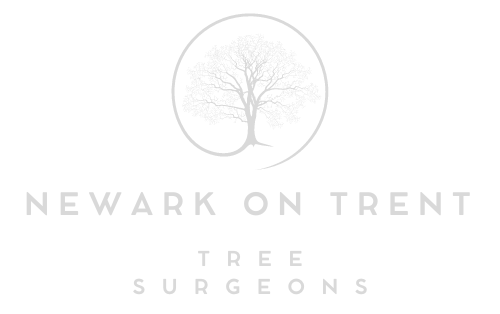Why Letting Your Hedge Grow “Naturally” Isn’t Always Wise
Introduction
It’s easy to assume that letting a hedge grow naturally is the best way to keep your garden looking lush and low-maintenance. After all, hedges are plants—shouldn’t they be allowed to grow freely like anything else in nature? While this sounds appealing in theory, in practice, allowing hedges to grow unchecked can lead to a range of problems, from structural issues to property disputes and even safety risks.
At Newark on Trent Tree Surgeons, we help homeowners and property managers across Newark on Trent maintain healthy, well-shaped hedges that not only look great but also function properly. In this article, we explain why an “untouched” hedge isn’t always the best approach, and how regular management can save time, money, and frustration down the line.
The Reality of Natural Growth
Unmanaged Doesn’t Mean Maintenance-Free
Allowing a hedge to grow naturally doesn’t eliminate maintenance—it simply delays it. And when that maintenance does become necessary, it often requires more drastic intervention. Left to their own devices, hedges can become:
- Uneven and leggy
- Overly tall or wide
- Difficult to prune back without harming the plant
- Prone to disease due to poor airflow and light penetration
The longer a hedge is left, the harder it is to bring it back to a neat, controlled shape.
Common Issues With Unmanaged Hedges
1. Excessive Height and Width
Natural growth often results in hedges that become disproportionately large for the space they occupy. This can create a range of problems:
- Blocking light to gardens, windows, or neighbouring properties
- Overhanging public footpaths or roads
- Becoming unstable or top-heavy
Many local councils have regulations around hedge height and encroachment. Failing to maintain your hedge could land you in a dispute—or even a legal situation—with neighbours or local authorities.
2. Reduced Health of the Hedge
When left unpruned, hedges can become too dense on the outside and bare on the inside. This happens because light and air can’t reach the inner branches, leading to dieback and vulnerability to pests and fungal infections.
Proper pruning encourages:
- Healthy internal growth
- Stronger branch structure
- Better airflow and light exposure
- Longer life for the hedge as a whole
At Newark on Trent Tree Surgeons, we assess each hedge individually and tailor our trimming techniques to suit the species and condition.
3. Safety Hazards
Overgrown hedges can obscure driveways, walkways, and visibility on the road. They may also conceal hazards or provide cover for trespassers. In severe cases, unchecked growth can interfere with power lines or block access for emergency services.
Indicators that a hedge may be posing a risk:
- It obstructs sightlines for pedestrians or drivers
- It’s growing near electrical infrastructure
- It’s hiding walkways, fences, or other property boundaries
Regular trimming keeps your hedge tidy and your surroundings safer.
4. Structural Damage to Property
Roots and dense stems from large hedges can cause real damage when grown too close to homes, fences, or outbuildings. Over time, expanding growth may crack masonry, warp wooden structures, or even affect drainage systems.
Watch for:
- Cracks in adjacent walls
- Warped or leaning fences
- Water pooling near hedge bases
A well-planned hedge line and consistent trimming can help avoid these costly issues altogether.
Benefits of Regular Hedge Maintenance
When managed properly, hedges offer beauty, privacy, and shelter for wildlife without the associated headaches. Regular trimming provides both aesthetic and practical benefits.
The Advantages Include:
- A neat and attractive boundary
- Fewer weeds and unwanted growth around the base
- Controlled size and shape
- Healthier plants with better foliage density
- Lower long-term maintenance effort
Maintaining a hedge doesn’t mean sculpting it into a perfect rectangle—it means shaping it to thrive in its environment without becoming unruly.
Best Time to Prune
The ideal time for hedge trimming depends on the species, but in general:
- Formal hedges benefit from two trims per year (typically spring and late summer)
- Informal hedges or slower-growing species may only need annual maintenance
- Avoid heavy pruning during bird nesting season (usually March to August)
Our team at Newark on Trent Tree Surgeons can advise on the right pruning schedule for your hedge based on its type and condition.
Conclusion
Letting a hedge grow “naturally” may seem like a low-effort, nature-friendly approach—but the reality is far more complex. Without careful and consistent management, hedges can become overgrown, unhealthy, and problematic. What starts as harmless growth can quickly turn into a time-consuming, costly issue.
Newark on Trent Tree Surgeons is here to help you strike the right balance between natural beauty and practical control. We offer expert hedge trimming, health assessments, and long-term maintenance plans tailored to your garden’s specific needs. Contact us today to keep your hedge looking its best—without letting it take over your space.
Call us on: 01636 556 296
Click here to find out more about Newark on Trent Tree Surgeons
Click here to complete our contact form and see how we can help with your tree needs.

